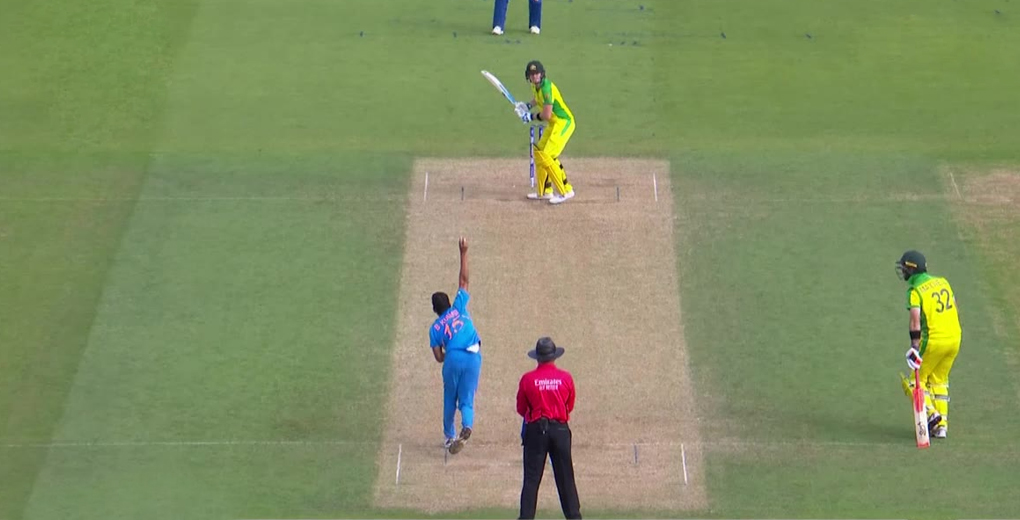Seam and swing bowling are two different strategies used by bowlers in cricket. Seam bowling involves hitting the seam of the ball to create movement off the pitch, while swing bowling relies on the air movement to make the ball deviate in the air.
Both strategies have their own advantages and challenges, making them crucial skills for bowlers to master. Cricket is a game of intricate strategies and techniques, with each aspect playing a vital role in determining the outcome of a match. One such crucial element is the art of bowling, which can be further divided into various tactics, including seam and swing bowling.
Seam bowling focuses on delivering the ball in a way that hits the seam to create movement off the pitch, while swing bowling relies on manipulating the airflow around the ball to induce lateral movement in the air. Both strategies are employed by bowlers to deceive and challenge the batsmen, adding layers of complexity to the game. We will explore the differences between seam and swing bowling, understanding their individual strengths, weaknesses, and their impact on the game. So, let’s dive into the world of cricket strategy and analyze the battle between seam and swing bowling.
Understanding Seam Bowling In Cricket
Seam bowling is a crucial technique in cricket that involves the manipulation of the leather seam on the cricket ball to achieve movement in the air or off the pitch. Unlike swing bowling, which relies on the orientation of the ball’s shiny and rough sides, seam bowling focuses on exploiting the seam. The seam acts as a catalyst for the ball to deviate from a straight path when it makes contact with the playing surface. This deviation can be in the form of unpredictable seam movement off the pitch or swing in the air.
Compared to other bowling techniques, seam bowling offers unique advantages. It provides control and consistency to a bowler’s deliveries, as the seam can be easily gripped and varied. Seam bowlers are skilled at exploiting the conditions of the pitch, aiming to deceive batsmen with subtle deviations. By altering the position, angle, and pressure on the seam, a bowler can generate movement and extract bounce, making it challenging for batsmen to anticipate the ball’s trajectory.
Grip And Seam Position
In the game of cricket, bowlers play a crucial role in determining the outcome of a match. When it comes to seam and swing bowling, the grip and seam position are of utmost importance. The proper grip for seam bowling is essential to enable the bowler to control the movement of the ball. By holding the ball between the thumb and the first two fingers, the bowler can generate the necessary pressure to put the ball into motion. Additionally, the seam position plays a vital role in achieving swing. By positioning the seam upright and perpendicular to the direction of the ball, the bowler can create an imbalance in the airflow around the ball. This, in turn, causes the ball to deviate in the air, making it challenging for the batsman to play a shot. Therefore, understanding and mastering the grip and seam position are key elements for bowlers aspiring to excel in seam and swing bowling.
Mastering The Seam Bowling Action
The seam and swing bowling actions are fundamental elements of cricket strategy. Mastering the seam bowling action requires attention to key aspects that can make a significant difference in the outcome of a game. Accuracy and control over the grip and release of the ball are crucial to achieve desired movement in the air and on the pitch. With precise seam position and a consistent wrist position, bowlers can generate unpredictable movements, making it challenging for batsmen to predict and adjust their shots accordingly.
Maintaining a strong front arm and a balanced approach during the delivery stride can enhance a bowler’s ability to manipulate the ball effectively. Bowlers should be mindful of common mistakes such as a wobbly wrist, improper seam grip, or a lack of follow-through. These mistakes can compromise the desired outcome and hinder the success of the bowling action. Regular practice, feedback, and analysis of one’s technique can help identify and rectify these errors, enabling a bowler to achieve mastery over the seam bowling action.
Utilizing The Seam To Generate Movement
Cricket strategy is crucial when it comes to seam and swing bowling. Utilizing the seam can generate movement effectively. One way to do this is by using the seam to create bounce and deviation. By positioning the fingers correctly along the seam, bowlers can make the ball move off the pitch in unpredictable ways, making it difficult for batsmen to play their shots. This tactic becomes even more essential when playing on different pitch conditions. For instance, on a dry and dusty pitch, the bowler can exploit the sharp edges of the seam to extract extra bounce and spin. On the other hand, on a green and moist pitch, the bowler can utilize the seam to make the ball swing in the air. Understanding these tactics and adapting them according to the pitch conditions can greatly enhance a bowler’s effectiveness in a game of cricket.
Seam Bowling Variations
Seam bowling variations play a crucial role in the game of cricket. Cutters and off-cutters are two common variations that seam bowlers employ to deceive batsmen. Cutters are delivered with a slightly grip and rotation, causing the ball to move off the pitch unpredictably. On the other hand, off-cutters are bowled with an angled seam and slight rotation, aiming to make the ball move away from the batsman after pitching.
These variations can be deployed strategically depending on various factors. When the pitch offers assistance to seam bowling, cutters can be effective in generating extra bounce and sideways movement. It is often used as a surprise delivery to catch the batsman off guard. Off-cutters, on the other hand, are ideal for dismissing batsmen who struggle against balls moving away from them.
Understanding when and how to deploy these variations is crucial for seam bowlers. It requires careful observation of the pitch conditions, the batsman’s weaknesses, and the game situation. By mastering these variations, seam bowlers can become valuable assets in a cricket team, contributing to wickets and keeping the scoring rate in check.
Understanding Swing Bowling In Cricket
Swing bowling is a technique used in cricket to deceive batsmen by making the ball move in the air, either away or towards them. It is achieved by the bowler manipulating the ball’s condition and grip, coupled with the use of swing-friendly atmospheric conditions. Unlike seam bowling, which relies on the ball’s seam position, swing depends on the ball’s shape and the bowler’s skill to generate movement through the air.
Swing bowling has its basics rooted in the art of reverse swing, where a worn-out ball with one side rough and one side polished can be made to deviate late in its flight path. The primary goal of a swing bowler is to trick the batsman by having the ball swing late or early, giving them less time to react.
Key differences between swing bowling and seam bowling lie in how they achieve movement. While swing primarily relies on the delivery technique and ball condition, seam movement comes from the ball’s seam position hitting the pitch surface. Both techniques require skill and practice to execute effectively and can be game-changers in the sport.
Mastering The Swing Bowling Action
When it comes to cricket strategy, seam and swing bowling are two important techniques that can greatly impact the game. Mastering the swing bowling action requires specific techniques to achieve a swing-friendly action.
One of the common errors to watch out for is releasing the ball too early or too late. Timing is crucial in swing bowling as it helps determine the direction and amount of swing achieved. Another common mistake is not maintaining a consistent wrist position throughout the delivery. The position of the wrist greatly affects the release of the ball and the potential for swing.
Players should also focus on gripping the ball correctly. The grip should enable the bowler to have enough control over the ball to initiate swing. Incorrect grip can lead to the ball not swinging or losing swing too early. Lastly, it is important to have a smooth and rhythmic bowling action with good body alignment and balance. This helps generate the required pace and accuracy for successful swing bowling.
Swing Bowling With Different Types Of Balls
Swing bowling is an essential skill in the game of cricket, and it can be achieved with different types of balls. When using a new ball, the tactic for swing bowling involves focusing on maintaining its shine and seam position. Bowlers aim to swing the ball in the air towards the batsman, making it difficult for them to predict the movement.
On the other hand, swing bowling with an old ball requires different tactics. As the ball’s shine wears off, bowlers need to rely more on their skill and control to generate swing. They can achieve this by adjusting their grip, wrist position, and release point to get the desired movement.
It is crucial for bowlers to understand the characteristics of the ball they are using and adapt their strategies accordingly. Whether it’s swing with the new ball or tactics for swing with an old ball, mastering the art of swing bowling is a valuable asset for any cricket team.
Swing Bowling Strategies
Swing bowling is an essential strategy in cricket, capable of disrupting the opposition’s game plan. Tactics for swing bowling can vary depending on the batting style of the opponent. Against aggressive batsmen, swinging the ball away from their hitting arc can force them into playing risky shots. For defensive batsmen, bowling an in-swinging delivery can catch them off guard and lead to an lbw appeal. Swing bowlers should also consider the conditions, as swing can be more pronounced in overcast weather. It is important to maintain accuracy and consistency when executing swing bowling tactics. By mastering the art of swing bowling, teams can gain a significant advantage on the pitch.
Seam Vs Swing: Comparing The Advantages
Seam and swing bowling are two essential techniques in cricket that can help teams gain an advantage over their opponents. Both methods aim to deceive the batsmen by altering the trajectory of the ball. Seam bowling focuses on the movement created by the seam of the ball hitting the pitch, while swing bowling relies on the ability of the ball to curve in the air.
Seam bowling can be advantageous on a pitch with variable bounce, as it can cause the ball to deviate unpredictably off the surface. This technique also offers bowlers control over the swing and line of the ball. On the other hand, swing bowling can be particularly effective in conditions with atmospheric changes, as it allows the ball to move in the air, making it difficult for the batsmen to judge the line and length.
Ultimately, the key to success lies in finding the right balance between these two techniques. Teams must analyze the playing conditions, the strengths of their bowling attack, and the weaknesses of the opposing batsmen to determine which approach will be more advantageous in a particular game. By exploiting the strengths of seam and swing bowling, teams can maximize their chances of taking crucial wickets and gaining an upper hand in the game.

Credit: www.thetimes.co.uk
Frequently Asked Questions For Cricket Strategy: Seam Vs. Swing Bowling
Is Seam Bowling The Same As Swing Bowling?
Seam bowling and swing bowling are different. Seam bowling focuses on the seam movement while swing bowling focuses on the ball movement in the air.
Is Seam Better Than Swing?
Seam and swing are different sewing techniques, and the better option depends on your specific needs.
What Is Seam Bowling In Cricket?
Seam bowling in cricket involves bowlers aiming to make the ball deviate unpredictably by landing on the seam.
What Is The Difference Between Seam And Spin Bowling?
Seam bowling uses the seam to make the ball move off the pitch, while spin bowling uses finger or wrist spin to make the ball deviate in the air or off the pitch.
What Is The Difference Between Seam And Swing Bowling?
Seam bowling relies on the movement off the pitch due to the seam position, while swing bowling depends on the movement through the air caused by polished or rough side of the ball.
Conclusion
To sum up, seam bowling and swing bowling are two distinct yet equally important strategies in cricket. Both techniques require skill, precision, and an understanding of the game’s dynamics. Seam bowlers focus on exploiting inconsistencies in the pitch and generating lateral movement, while swing bowlers harness the air and produce late movement towards or away from the batsman.
Each style presents challenges for the batsman, testing their technique, patience, and judgement. Seam bowling can be particularly potent on tracks with uneven bounce, while swing bowling can be devastating when conditions favor the movement of the ball through the air.
Ultimately, the choice between seam and swing bowling depends on various factors such as the conditions, the opposition, and the bowler’s skillset. Whichever strategy is employed, the aim remains consistent – to outwit and dismiss the batsman. So, both seam and swing bowling play significant roles in cricket and are essential weapons in a bowler’s arsenal.




